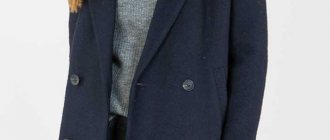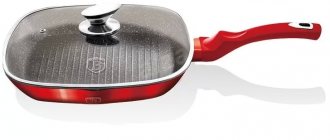In our climate, most people wear coats in the autumn and spring. This is a very comfortable and at the same time stylish type of wardrobe, it is worn by both men and women. Impeccable appearance, presentability and fashion are the main components of this outerwear. But, like any kind of thing, a coat requires careful care. To avoid spoiling, losing color, stretching, or losing appearance, owners take their coats to the dry cleaner.
The cost of the service in Russia varies from 500 to 4000 rubles , but the price is justified, because only with professional cleaning products can it be restored to its freshness and original appearance. After all, at home in cars, products made from expensive materials quickly settle or stretch, and are not washed to the desired condition. Therefore, only dry cleaning will save your coat from any damage.
Benefits of dry cleaning for outerwear
Let's look at the main advantages of dry cleaning:
- Protection from harmful insects . After being worn for a long time on the street or in transport, moths may appear in clothes, which are very difficult to get rid of in the future. This type of insect can greatly ruin your favorite item, so before hanging your clothes in the closet, take them to the dry cleaner. Thanks to special means, the coat will be cleared of larvae.
- Removing heavy stains . Almost every person thinks that dry cleaning is very expensive, but only thanks to it can clothes be restored to their original appearance. It is very difficult to remove dirt and stains on your own; washing in the laundry will remove any dirt completely.
- Delicate care . Coats are made from expensive fabrics that require special handling. Dry cleaning solves this problem quickly; any inserts or decorative buttons do not interfere with the careful processing of the fabric.
- Quality service . Entrust your favorite thing to professionals. Yes, this is not exactly a cheap service, but the result is worth it. At home, the quality of clothes is not always preserved when washed, and highly qualified personnel have the opportunity not to damage any fabric.
Dry cleaning a down jacket at home
If for some reason you cannot resort to the services of professional dry cleaners, you need to independently delve into the intricacies of cleaning down jackets and do everything yourself.
When starting the cleaning process, you need to remember the most important thing - any dirt will be removed much easier if it is washed off immediately after it appears. And, of course, you can’t leave a down jacket dirty until the next season, as the dirt can be “tightly” absorbed into the fabric and make cleaning labor-intensive and ineffective.
You can clean a down jacket at home by washing it by hand or in a washing machine, or by hot steaming.
Basic tips and rules for washing a down jacket at home:
- You cannot pre-soak a down jacket, even if you want to get rid of greasy stains;
- The down jacket can be washed at a temperature not exceeding 30 degrees;
- for washing, it is better to choose liquid detergents or baby powder without any specific properties of an aggressive effect on the fabric;
- Before the main wash, it is necessary to wash areas of particular contamination (collar, sleeves);
- to prevent fluff from clumping into a lump, it is recommended to use special laundry balls (as an option - regular tennis balls, about four of them);
- The product must be washed on delicate cycles;
- The rinsing should also be gentle, but thorough, so as not to leave streaks and stains from detergents.
It is also recommended that you take drying your down jacket very seriously. It is not recommended to dry it on a hanger; it is better to lay it on a horizontal surface.
During the drying process, it is necessary to periodically shake the down jacket, so its natural filling does not form a lump.
Main types of services
There are two types of cleaning clothes:
- Water cleaning.
- Dry cleaning.
A special feature of wet cleaning is the use of water during washing together with special products. Clothes are often labeled with a “do not dry clean” symbol, so this method is ideal for restoring fabric . When wet cleaning, the product is placed in a device similar to a washing machine, but it damages the fabric less due to low speed.
Dry cleaning is cleaning clothes without using water; only chemicals . The item is also placed in a machine similar to a washing machine, only here the process takes place without water. The main advantage of this method is the absence of fabric shrinkage or shedding. The dry type of fabric processing requires a more careful approach; it happens that the product is washed several times.
Stages of the technological process depending on the type of pollution
Dry cleaning of clothes is a chemical-physical process using effective solvents of different compositions. The most common cleaning agent used for cleaning clothes is perchlorethylene (PCE). It is also possible to use water and special surface-active liquids - detergents.
In addition to solvents, when cleaning clothes, other chemical materials are used for degreasing, stripping and stain removal. Liquids are selected depending on the technology (cleaning with water, solvents containing carbohydrates or perchlorethylene), the type of contaminants, and the material from which the items are made.
The stages of the technological process include:
- receiving clothes - this stage is very important. During the appointment, the specialist determines the type of material, defects of things, type of contamination, selects the necessary substances to remove stains, and processing technology. In addition, a contract is drawn up;
- sorting - at this stage, batches of items are assembled for subsequent loading into a special machine that performs chemical cleaning. Sorting is carried out according to the texture of the fabric, the color of the items, the level of contamination, since due to the individual characteristics, each fabric feels differently in the machine. Sorting by color is necessary so that dyes do not move from one thing to another;
- stain removal - this process is also called preliminary cleaning. The process is suitable for the most contaminated areas of clothing. To remove stains at this level, detergents and solvents are used. Surfaces are cleaned to remove stains using local light. Such tables are a surface with a hood located on them. Compressed air and steam are supplied using guns. A powerful air flow combined with water, solvents and fabric detergents effectively removes stains;
- Dry cleaning in a machine involves drawing out dirt using solvents from the fibers of the material and dissolving them. Dry cleaning equipment operates in a closed cycle. In the container, perchlorethylene, which has already absorbed dirt from things, is filtered and passes into the distiller, where it is cleaned. To protect workers and customers, dry cleaning equipment is equipped with an adsorber. The device absorbs solvent vapors formed during drying and, accordingly, removes them from things and the drum;
- finishing operations - basically, the finishing stage consists of ironing. This occurs on ironing surfaces using irons with steam supplied from the built-in steam generator. Mannequins and presses are also used.
Subsequently, after ironing is completed, the clothes are checked for dry cleaning quality and the products are packaged. Sometimes clothes are cleaned if dirt remains.
Reception of clothes
Sorting
Removing stains
Machine washable
Ironing
Contamination occurs on the entire surface or locally. The most noticeable ones are stains or dust. The hardness of the material from salt, which is present in foods or sweat, is less visible. The color changes and an unpleasant odor appears due to acid or alkali contamination.
There are many substances that contaminate clothes, but some contaminants are similar to each other. They can be divided into the following groups:
- Soluble are those contaminants that dissolve during degreasing. These include fatty substances, oils, and waxes. Such contaminants do not dissolve in water;
- water-soluble - stains are divided into two types. The first type (sugar, salt) is easily dissolved in water, the second - partially (sauces, soups). These contaminants are called food contaminants;
- insoluble - these contaminants are completely insoluble in water or solvents. These include dust, soot, and pigment substances. The process of removing stains from fabric uses dry cleaning. The problem is that stains can appear after removal; resorption occurs, causing things to look gray;
- Contaminants in small areas of the product, which include varnish stains, blood, paint, are removed with preliminary cleaning, often manually using special tools.
In the conditions of dry cleaning enterprises, the factors that influence the ease and quality of removal are the type of contamination of the material, the number and type of stains, and the length of time they remain on things.
The cleaning method is selected depending on the type of contamination
What does the price depend on?
In order to understand the price of a service, you need to consider several factors. Firstly, how dirty the clothes are. Naturally, the price will be higher if the coat has been worn for a long time and requires thorough cleaning and removal of stubborn stains. This will require more effort and expense. Secondly, experts pay attention to the design of things.
The more expensive the fabric of your coat, size, seasonality, complexity of details, the higher the price for the service will be. Thirdly, the price of services depends on the need for restoration. For example, removing pellets, returning the original color of the fabric.
At the moment, prices vary across Russia in different regions, but in general they can be broken down into approximately the following price range:
- Cleaning a demi-season coat will cost from 500 to 1500 rubles .
- Faux fur coat - from 600 to 1800 rubles .
- Coat with fur lining, natural down - from 1000 to 4000 rubles .
As you can see, the prices are quite different. It is clear that in Moscow or St. Petersburg, for example, the cost of the service will be higher than in Penza. But in any city in Russia you need to choose the right office where professionals work.
Redying a down jacket
It is most realistic to dye a down jacket, like a sheepskin coat, in a dry cleaner, but not every professional dry cleaner will undertake this, since this process carries a high risk of failure.
Before the painting process, the down jacket must be cleaned of dirt, perhaps even dry cleaned. After painting, it is recommended to wash the down jacket to avoid paint fading on clothing or body.
In general, unless there is an urgent need to change the color, it is recommended to refrain from repainting.
Caring for a down jacket is a serious matter, but follow the basic recommendations in this article and on the manufacturer’s label, treat the item with care, it will definitely last for many years, giving its owner warmth, comfort and protection in the cold season.
Features of cleaning light coats
Light fabrics are very capricious. The stains on them are visible from afar, and if they are removed incorrectly, the consequences of an unsuccessful experiment will completely ruin the item and it will become unusable. To prevent the coat from going to the dacha, you need to take into account some features:
- Traces of juice, sweet soda or kvass can be wiped off with hydrogen peroxide. Before the procedure, do not forget to wear rubber gloves. The antiseptic is replaced with alcohol or vodka.
- Baby powder works great against greasy stains from machine or vegetable oil. An alternative would be kitchen potato starch. The problem area is soaked with warm water and sprinkled with the product. After 15-20 minutes, the residues are removed with a damp cloth or rag.
- Remember that fresh stains are always easier and faster to remove than stubborn old stains. If a few drops of wine fall on a light-colored cloth, immediately wipe it with an antiseptic or alcohol-containing wipes.
Product preparation
An important point in dry cleaning is the preliminary preparation of clothes for treatment. To keep an item handed over to specialists in perfect condition, you need not only to know how dry cleaning is done, but also to be able to prepare the item for processing. What should you do before dry cleaning?
- Do not try to remove the stain yourself. An incorrectly selected dirt remover can only make the dirt worse. It is better to trust professionals in this matter.
- Make sure the clothing is free of defects. Fabric rips, loose buttons, and other damage should be repaired before cleaning.
- A fresh stain is easier to remove. The sooner your clothes are dry cleaned, the better the results.
- If possible, remove all appliqués from clothing - belts, hoods and other removable elements.
- When you hand over an item to the dry cleaner, you will be issued a receipt with its detailed description. You should read it carefully and also clarify the possible negative consequences of dry cleaning.
Features of cleaning dark coats
To preserve such things, it is better to use wet processing methods. Dry methods can damage the lint or wool, so it is best to avoid them.
Do not wash dark wool coats in hot water. The optimal temperature is 30 degrees, otherwise the product will shrink.
Wipe your clothes with a damp, clean cloth every few days. You can also use impregnated wipes for these purposes. A sticky roller, a sponge with soapy water, or dry cleaning will help rid the item of dry dirt.
Dark coats should not be rubbed with white products - powders or compounds, so that there are no stains left, which are extremely difficult to get rid of.
How much does interior dry cleaning cost?
The cost of dry cleaning consists of the following indicators:
- cleaning method – 600 – 2500 rubles;
- degree of pollution – 1000 – 3000 rubles;
- choice of product – 300 – 2500 rubles;
- consumables – up to 3000 rub.
Additionally, the cost increases:
- when cleaning a bright interior;
- in the presence of difficult-to-remove stains (from berries, tea, various oils) or old stains;
- when using professional technological equipment.
Thus, the average cost of high-quality interior dry cleaning is 4,500 – 7,000 rubles.
Secrets of things: how do dry cleaners work?
Dry cleaning - what do they do with our clothes? Why is it not so rare that “something goes wrong”? In recent years, new technologies have appeared in the service of such services, but should we expect miracles from them?
What hopes should you place on dry cleaning, and what should you not expect from it? We decided to study the work of this service from the inside. They took several shirts, T-shirts and trousers and thoroughly stained them: gouache, vegetable oil, berry syrup, balsamic vinegar, spray paint... and sent it all for processing. First of all, the technologist determines what can and cannot be done with the thing. Its factory markings help - and it becomes more difficult if the tag is cut off. The problem may also arise due to the fault of the manufacturer.
If the label allows chemical treatment, this must mean that the manufacturer made the buttons from a resistant material. But in reality this is not always the case, especially with cheap clothes. The fittings may break in the drum or be damaged by solvents (some types of plastic and finishes literally melt). Therefore, if possible, good dry cleaners pack protruding elements in protective cases. And sometimes they simply cut it off (by the way, they don’t have to sew it back) to save it from the main cleaner - perchlorethylene! It will even dissolve glue, for example, that is used to glue rhinestones. A responsible master will always discuss the possible consequences with the client in advance, and they will make a joint decision on how best to proceed.
So, the item is prepared and sent for preliminary cleaning. A specialist studies the origin of the stains - which are greasy, which are protein, which are from paint, and which are from fruit. At this stage, the technologist decides which active substances and in what concentration will be added to the chemical or aqua treatment machine. The difference is that in one case water is used, in the other it is not.
Only perchlorethylene will work here. This is a solvent from the group of substances that gave rise to dry cleaning. In 1855, the owner of a Parisian dyeing factory, Jean Baptiste Jolly, noticed that the tablecloth on which the maid had spilled kerosene became cleaner. He offered a stain removal service using this petroleum product - few people would want to do this at home, but giving it to a special service and getting a clean result is great, the service has gained popularity. At the beginning of the 20th century, less flammable white spirit began to be used instead of kerosene. In the 30s it was replaced by completely fireproof perchlorethylene.
You can’t use perchlorethylene at home—it requires special temperatures and pressure, and the substance is potentially toxic. But in dry cleaning conditions, of course, there is no danger - all possible protections have been thought out there. For almost a hundred years, perchlorethylene reigned supreme among solvents. But in recent years it has been replaced with a mixture of modified alcohols - they give a double effect - dry chemical and wet water cleaning at once. That is, things do not need to be processed in two different machines. And the new composition treats buttons more delicately. The risk of ruining an item in such a machine is reduced. Therefore, if you are concerned about the fate of your clothes, it is better to clarify what technology is used by the dry cleaning service whose services you are used to using.
Let's return to our experiment. In parallel with the professionals, testers Katya Kondratieva and Sasha Tsygankov are trying to wash the same soiled clothes on their own. In service: a popular liquid product in a recognizable purple bottle for 130 rubles, a special anti-stain soap for 30 rubles, and a line of solvents for various types of stains - 200 rubles each.
All products, according to manufacturers, are suitable for any fabrics and stains. But they work differently. The basis of soap is surfactants that bind water molecules to dirt particles and wash the latter out of the fabric. In the gel from the purple bottle, the so-called “active oxygen” are compounds that are ready to give up their oxygen molecule to oxidize the stain, breaking it down into carbon dioxide and water. The bottles contain solvents that break down contaminants pointwise. The latest remedies are almost like professional ones, only not as strong. With soap and popular stain remover, pre-soaking is required. Katya and Sasha did it. When they reached semi-professional bottles, the situation became more complicated - it was no longer possible to identify contaminants, which means it was difficult to apply the correct powder or liquid.
No miracle happened! Yes, our cases are a little invented, out of the ordinary, but nevertheless: home stain removal is a difficult and thankless task. Even if you have specialized products at your disposal, how do you decide which one to use in order to remove, for example, a trace of borscht, which contains three pollutants of different natures: fat, beets and sour cream? In the experiment we conducted, dry cleaning did a much better job. The most difficult ones for her were colored polos and blouses (increasing the concentration of solvents along with the stain would have removed the dye from the fabric), and a long-sleeved T-shirt - this one contained delicate synthetics.
In general, as we understand, a good cleaning specialist is like an artist - he works creatively, which gives a positive result. In practice, this means that you can only find a good dry cleaner... through reviews! No one is immune from the human factor. But still, experts assure that this happens less often than domestic incidents when people try to resuscitate things themselves. Often, inept stain removal only preserves the dirt, and then nothing can be done with it. And then even professionals will not help.
The full episode of “The Miracle of Technology with Sergei Malozemov” dated April 22 is available here.
All full episodes of the “Miracle of Technology” program are here.











